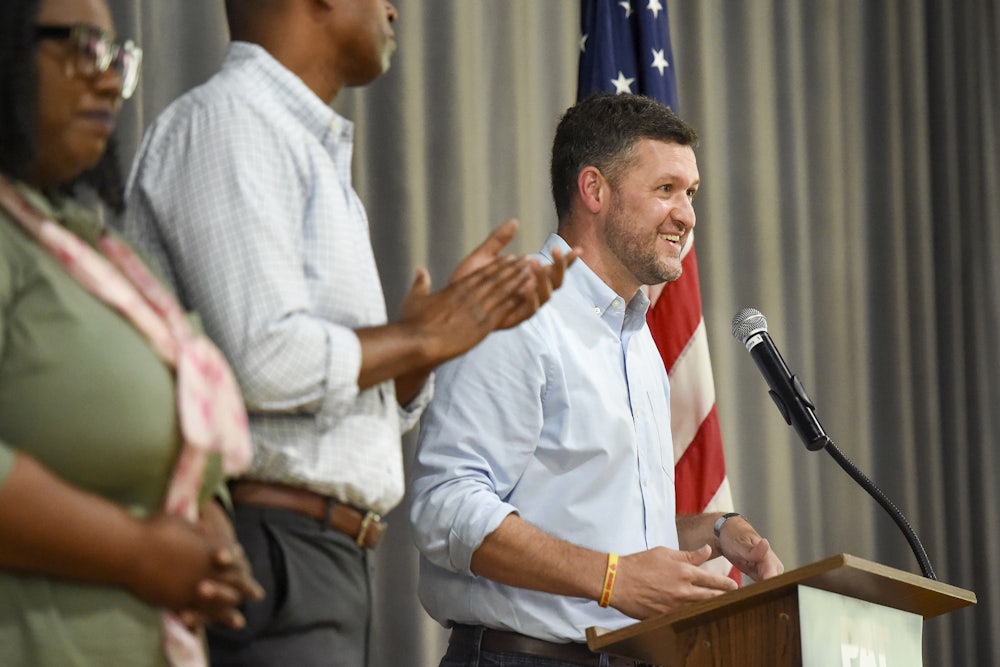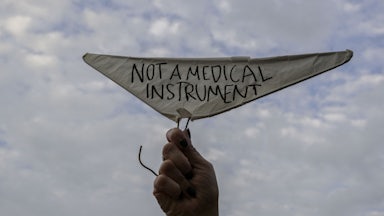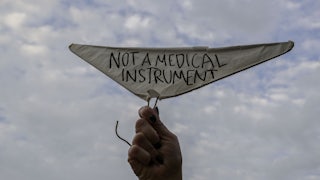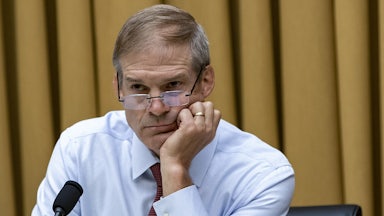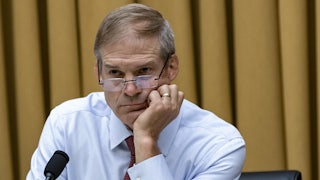Last week, Democrat Pat Ryan unexpectedly won the special House election for New York’s 19th congressional district, a contest that had been ominously defined by analysts and pundits as a “bellwether race” ahead of the midterm elections. Preelection polling showed Ryan trailing Republican Marc Molinaro, but after the dust had settled it was Ryan who prevailed, by a 2 percent margin.
How did Ryan beat expectations? His victory might just be a testament to his campaign strategy of focusing on abortion rights in the wake of the Supreme Court decision that overturned Roe v. Wade. The issue permeated Ryan’s campaign message: Popular campaign signs for Ryan read “choice is on the ballot.” His campaign was also notable in its swift response: Just an hour after the court released the Dobbs v. Jackson Women’s Health Organization decision in June, Ryan tweeted an ad in which he drew a line between his military service and his support for abortion rights. “Freedom includes a woman’s right to choose,” Ryan says in the ad, addressing the camera. “How can we be a free country if the government tries to control women’s bodies?”
Chris Walsh, Ryan’s campaign manager, told me that the campaign had formulated its strategy based on listening to voters about what was motivating them. Ryan launched his candidacy in May, shortly after the draft of Justice Samuel Alito’s Dobbs decision leaked to Politico. The campaign knew it was “only a matter of time” before Roe would be overturned, Walsh told me, and the ad was filmed about a week and a half before it was aired. They had intended to air it on TV just days later but decided to drop it early when the Dobbs decision came down.
“It was palpable on the ground that this is truly what voters were looking for and what they wanted leadership on,” Walsh said. “We weren’t waiting for the polls to tell us what to do; we weren’t waiting for the pundits to tell us what to message. We were listening to voters on the ground.”
The messaging on abortion started early: In an interview with local public radio station WAMC shortly after he announced his campaign, Ryan highlighted the issue as contributing to an “existential point” in our democracy. “I mean, across the board, some of the most fundamental rights that many before me and us have sought to secure, from voting rights to the right of a woman to choose what she does with her own body, what we thought were settled, are under attack,” Ryan said. “So people need to know that there’s someone very clearly and unequivocally that’s going to fight to protect those rights.”
Ryan tapped into a current of anger building among abortion rights supporters, many of whom—including some lawmakers—felt as if the national party and President Joe Biden specifically weren’t responding with necessary urgency. Recognizing and listening to that sentiment could be a replicable strategy for other Democrats. “Democrats should be looking at this issue and understand that we need to reflect the anger and energy that we’re seeing across the country,” said Dani Negrete, the national political director of progressive group Indivisible. “But mostly, and this is part of the reason why I think that Ryan was successful … voters want to know that their candidates and their leaders understand the stakes of the fight.”
Abortion rights are protected in New York, and Molinaro had said that he would vote against a federal abortion ban. In a state where abortion rights aren’t under an immediate threat, one might think that voters would be less motivated than in, for instance, Kansas, were a recent amendment vote protected the state constitutional right to an abortion in a landslide. But Ryan’s victory, and his status as one of several Democrats to have outperformed Biden in special elections happening after the Dobbs decision, indicate that the issue is salient for voters regardless of where they live.
“I think voters right now really want to see candidates and campaigns that are stepping up and saying, ‘This is what we stand for. And this is how we’re going to achieve it,’” Walsh said about campaign messaging on abortion. “Everybody should run their own race, but we found it to be very effective. And we found it to be a real rallying cry. So I definitely think there’s a lot of opportunity for it to be used in other places.”
As FiveThirtyEight noted, in special House elections before mid-June, Republicans did two points better than expected based on district partisan lean. But in the four special elections after the Dobbs decision, Democrats have outperformed expectations by an average of nine percentage points. On the same day that Ryan defeated Molinaro, in the special election in New York’s 23rd congressional district, which is solidly Republican, Republican Joe Sempolinski defeated Max Della Pia by a tighter than expected margin of seven percentage points. “The reality is that [in] these special elections, we have a different set of issues that we were running [on than in] 2020,” Negrete said.
Ironically, Ryan and Molinaro may end up serving together as members of Congress come next year. Thanks to redistricting, Ryan is the Democratic nominee in the newly drawn 18th congressional district and Molinaro the Republican candidate in the neighboring new 19th congressional district. (The former district has a slight Democratic partisan lean, the latter a slight Republican partisan lean.) Moreover, Democrats are still widely expected to lose the House, if by a smaller margin than initially predicted.
Still, Molinaro’s loss in the special election—as a popular moderate GOP county executive and former gubernatorial candidate—may be a harbinger of the power of abortion rights in future elections and a blueprint for Democrats looking to motivate voters in difficult races. “People are fired up. And I think that we were a bit of a canary in the coal mine that polls take a few weeks to catch up to what’s on the ground,” Walsh said.
